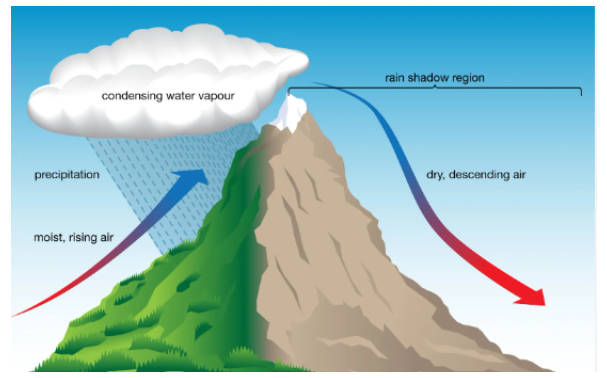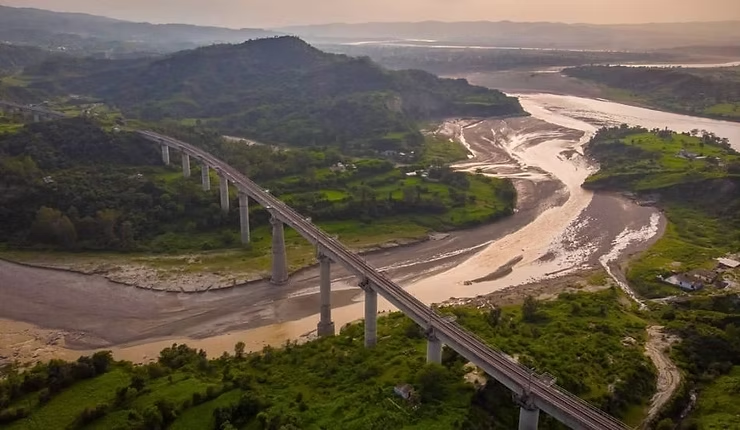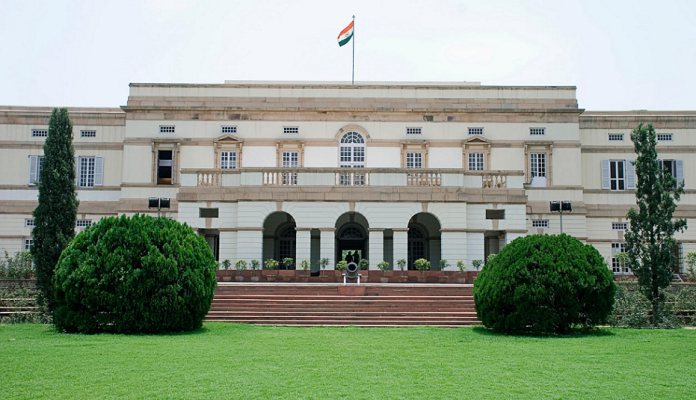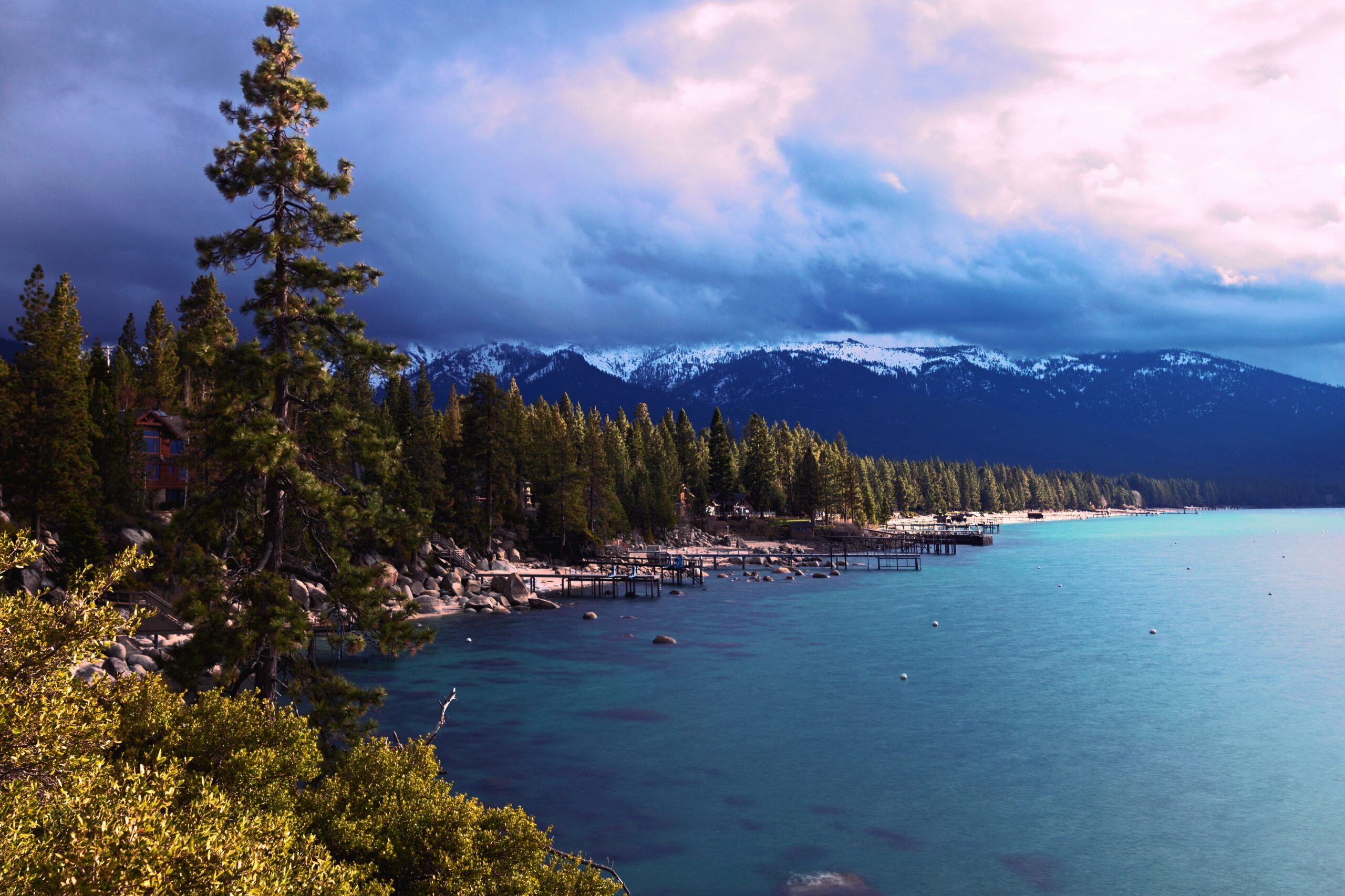Cloudburst in Himachal Pradesh
Syllabus: Geography | Disaster Management
Source: The Indian Express
Why In News: Cloudburst
Recent cloudbursts in Kangra and Kullu districts of Himachal Pradesh triggered severe flash floods, resulting in two deaths and over a dozen missing.
What is a Cloudburst?
- A cloudburst is a sudden and highly intense rainfall event, where 100 mm or more rain falls in under an hour over a small area (around 10 km²).
- Such events mostly occur in hilly or mountainous regions, often leading to flash floods, landslides, and large-scale destruction.
Conditions Favouring Cloudbursts:
- Orographic Effect: Moist monsoon winds rise rapidly when they hit steep mountain slopes (e.g., Himalayas), leading to heavy cloud formation.
- Strong Convection Currents: Fast upward movement of air (60–120 km/h) helps form tall cumulonimbus clouds loaded with moisture.
- Localized Convergence Zones: Specific wind patterns trap moisture in narrow valleys, increasing rainfall concentration.
- High Moisture Retention: Warmer air holds more moisture (about 7% more per 1°C rise), intensifying rainfall, as per the Clausius-Clapeyron Law.
How Do Cloudbursts Occur?
- Moist monsoon winds strike the windward slopes of mountains.
- Rapid cooling and condensation form towering cumulonimbus clouds (up to 15–21 km height).
- Under unstable atmospheric conditions, these clouds release enormous rainfall over small regions.
- Rainfall can exceed 2 billion litres per hour over areas as small as 20 km², overwhelming drainage capacity and triggering flash floods and landslides.

Consequences of Cloudbursts:
On Disasters:
- Flash Floods: Sudden water surges flood settlements (e.g., Manikaran, 2025).
- Landslides: Rain-soaked slopes collapse, damaging roads (e.g., Chokhang–Nainghar road, Lahaul, 2025).
- Infrastructure Damage: Bridges, roads, and essential infrastructure washed away (e.g., Baladhi Bridge, 2025).
On People:
- Loss of Life and Displacement: Sudden impact leaves little time for evacuation (e.g., 15 workers missing in Kangra).
- Livelihood Loss: Damage to hydropower, agriculture, and tourism causes long-term economic setbacks.
- Access Blockades: Villages like Jasrath and Manikaran get cut off due to washed-away roads and bridges.
On the Environment:
- Soil Erosion: Destabilizes riverbanks and mountain slopes, affecting biodiversity.
- Sediment Overload: Increases in rivers, affecting aquatic life and dam operations.
- Water Pollution: Waste from urban areas spreads into rivers, degrading water quality.
Measures to Manage Cloudburst Risks:
National Guidelines:
- NDMA Cloudburst Management Guidelines (2010):
- Focus on early warning systems, risk zoning, and community awareness.
- Emphasis on preparedness, coordination, and structural resilience.
Technological Upgrades:
- Doppler Weather Radars: Provide short-term alerts (nowcasting within 3 hours).
- Automatic Rain Gauges: Help map cloudburst-prone zones.
- Weather Modelling: IMD uses advanced models for predicting heavy rainfall, though precise cloudburst forecasts remain challenging.
Local Capacity Building:
- Hill state administrations (e.g., Himachal Pradesh) conduct:
- Awareness campaigns and evacuation drills.
- Monitoring of hillsides during monsoon.
- Emergency response measures, like halting dam water release when required.
Climate Action:
- As per IPCC, warming increases extreme rainfall events:
- A 1°C rise = 7–10% more rainfall potential.
- Need for emission reduction and climate-resilient planning in hill towns.
Recent Cloudburst Incidents in India
| Location | Date | Impact |
|---|---|---|
| Kullu & Kangra, Himachal Pradesh | June 2025 | 2 dead, over 10 missing; flash floods in Brahmaganga, Sainj, and Gadsa rivers. |
| Uttarkashi, Uttarakhand | July 2023 | Cloudburst near Gangotri Glacier triggered flash floods; 7 fatalities reported. |
| Amarnath Cave, Jammu & Kashmir | July 2022 | Upstream cloudburst led to sudden flooding; 16 pilgrims dead, over 40 injured. |
| Mumbai, Maharashtra | July 2005 | Record rainfall of 94 cm in 24 hours; over 400 deaths due to urban flooding, similar to a cloudburst event. |
| Leh, Ladakh | August 2010 | Over 200 killed; massive mudslides and flash floods, especially in Nubra Valley. |
Note: While cloudbursts are most common in hilly regions, extreme rainfall events like the 2005 Mumbai floods are often compared to cloudbursts due to similar rainfall intensity and sudden impact.
Conclusion:
Cloudbursts are becoming more frequent and destructive, especially in the fragile Himalayan ecosystem, due to climate change and inadequate forecasting systems. A multi-pronged approach, combining technology, local preparedness, infrastructure resilience, and climate action, is essential to protect lives, livelihoods, and ecosystems in vulnerable regions.
Exam Relevance:
- Prelims: Basics of cloudbursts, conditions favouring them.
- GS Paper 1: Geography – Climatic Phenomena.
- GS Paper 3: Disaster Management, Climate Change Impacts, Infrastructure Resilience.











